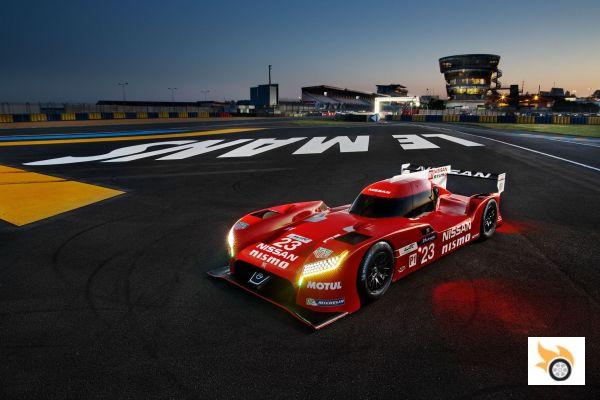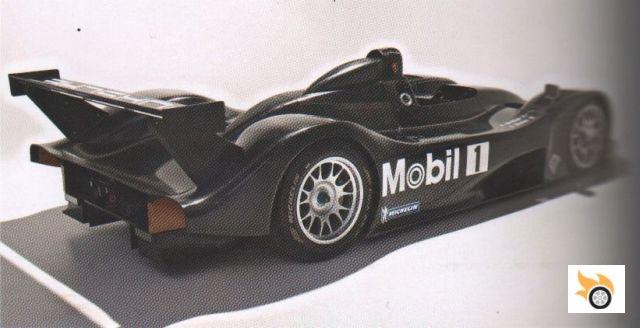Speed before reliability
Le Mans 2017 had a special tinge to it for weeks before the start of the race. Despite the new aerodynamic limitations of the ACO in order to reduce the performance of the LMP1 cars, the two teams had already declared in pre-season to have recovered what the regulations had "taken away", and a few tenths more.
The simulations and the first two WEC races, even though they were run in different conditions (Toyota with the high load body kit, Porsche with the low load one from Le Mans), already made us think that the cars could reach the 3:15 limit.
Toyota did not disappoint in practice, and quickly showed its excellent form. Porsche, on the other hand, proved not to be as far away as it seemed in the WEC, once both cars had the same aerodynamic configuration. But in reality, a much darker secret was brewing behind all these moves.
We had already heard by then that the Porsche was a weaker car in terms of reliability, especially if they had to push it to 110% of its potential, but what nobody expected was that the Toyotas would falter, especially after completely overhauling the quality validation procedures for all their components after last year's disaster.
The race strategy seemed clear. With a numerical and performance advantage, and knowing they were theoretically superior on the reliability front, Toyota had to use at least one hare to destroy the Porsche, force them to run, and keep one or two cars behind to play the reliability card. Vasselon's team directly attacked with two hares, and the race started fast, although not "as fast" as it could be, with 3:18 paces.
The Porsche #2's wheel bearing
Porsche was able to match the time, but with much more stress on the car than expected. And the result was not long in coming. After only four hours of racing, the Porsche #2 Porsche broke down its front electric motor-generator. Although in the live everything seemed to indicate that something would have to do the high temperatures, now we know that the failure was directly from something as simple as a "palier". The Porsche's front engine-generator, capable of delivering 400 horsepower to the front wheels (the combustion engine delivers just over 500 to the rear wheels), is connected to them through a composite carbon fiber and metal bearing. It seems that the composite part failed and that caused the whole problem that ended up forcing the engine-generator to be replaced.
And why did it fail? It is really something strange, since this same system has been used in the WEC and in the Le Mans test, and should be able to withstand without problems. But in the end, either by design flaw or manufacturing failure of that specific part, the truth is that having to push too hard meant too much stress for that bearing, and ended up burying the #2 in the standings in what seemed to be the end of the race.
It was looking good for Toyota then. It was three against one with reliability on their side. Maybe someone more conservative or fearful would have bet on leaving two cars in the rear and squeezing the #1 Porsche to failure, but Vasselon and his team were confident their cars would hold up, and they weren't entirely confident in the Stuttgart car either.
The engine-generator of the #8 Toyota
What no one was counting on was a mechanical failure eight hours into the race for Toyota. And that's exactly what happened. After more than 30,000 kilometers of track testing at Motorland Aragon, Paul Ricard and Portimao and 30-hour tests, where the front engine-generator had not failed, something that had not happened in the WEC either, the #8's device failed.
Of this failure for the moment we have no more details, but we do know that Toyota, as a precaution, decided to change engine and battery, in an operation that ended up costing 40 minutes extra compared to a "simple" engine-generator change, something that ultimately could have cost them the victory.
But at that moment they wanted to leave the car completely repaired, thinking that they had two more bullets on track.
The mess in the pits and the clutch of #7
The rule says that if you take two cars to Le Mans, one breaks down, one crashes, and maybe the third one can win. Porsche and Toyota, by the tenth hour of the race, had already dropped one car each due to reliability problems.
But what happened then with Toyota's number seven borders on the absurd. During a routine pit stop under the safety car, the #7 was attempting to rejoin the field when it received the radio order to stop. As you know, at Le Mans, three safety cars are used to cover the entire track, creating three little trains. When you get back on track you have to do so by joining one of these "trains" of cars, and the team ordered #7 to stop in order to properly join the "train", and not come out just in front or in the middle of the safety car that was passing in front of the wall at the time.
Inexplicably, a driver from another team, in the middle of the darkness of the night, and we are not clear with what intention, gave orders to the TS050 to "start-stop-start-start". The driver, Kobayashi, mistook the driver for a marshal, and restarted the car, only to receive the immediate order from the team to "stop". The result? The clutch burnt, and the car was left on the track after joining the caravan of cars.
Although the Japanese driver tried to return with the burnt clutch to the pits, in pure electric mode, the car ran out of battery in the Porsche corners, and had to retire.
Can anyone prepare for this? Well, simply no. Of course, "a more robust clutch" might have held up better, but these cars are designed to save any extra ounces, and this bizarre circumstance never happens in racing.
A purely unlucky accident for #9
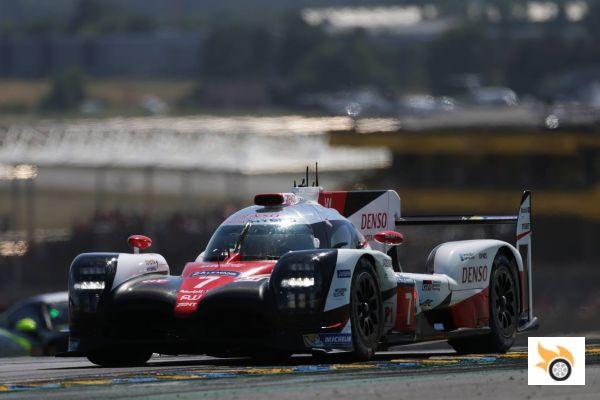
The Le Mans rule says you lose a car by accident, and that's exactly what happened shortly after to the #9 Toyota, which was hit by an LMP2, puncturing a wheel and destroying the rear engine and electric generator, forcing its abandonment, even though the car was also trying to crawl to the pits in electric mode.
This is typical for this race, so there's not much more to think about.
No oil pressure for Porsche #1
So, after eleven hours of racing, the Porsche #1 was left alone in the face of danger, in search of a victory that had to be achieved "without breaking". Knowing the fragility of the car, the guys from Stuttgart raised the pace, a lot, but that did not prevent that with four hours to go, the 919 suffered an unexpected loss of lubrication, and damaged its combustion engine.
Again, although the car tried to drag itself to the pits in electric mode, the lack of battery charge ended up leaving it stranded.
Victory by luck and workshop effort for the number #2.
So, the victory of the #2 Porsche would end up being pure luck. The failures of the other four LMP1 hybrids allowed it to fight again for a victory that, in any case, had to fight in a sprint that made the German team's hair stand on end.
With so many reliability problems, nobody was sure that the 919 could be driven the last four hours of the race "on fire". Fortunately for the #2, the Oreca LMP2 race leader (first LMP2 race leader in history), made an unexpected stop with an unexpected rear bodywork change, which was also complicated, and allowed the Porsche to save 21 minutes in the chase: from being at the pace of catching the Oreca with half an hour to go, the #2 now had the victory in its mathematical pocket, as it would catch it with an hour to go.
In the end and in the end, the Porsche 919 would not break, and would take the 19th win for Porsche, third in a row for the 919.
But did Toyota really do so badly?
The feeling at first glance of Toyota's situation is negative, there's no doubt about it. Having the fastest car and numerical superiority, and not winning, especially after last year, is a "bad" thing.
But if you look at what I've said above, the reality is that a crash loss is always on the cards at Le Mans. A crash loss is the only thing that can be attributed to a "team" problem, while the problem of the burnt clutch and the "mystery" driver starting #7 is bizarre and, at least for me, never seen before in endurance.
Le Mans is unique and unpredictable, and this year it was more a matter of bad luck, in the case of the #7 car, than poor management, design or quality control on Toyota's part.
Best of all, they have already confirmed that they will be back next year, and seeing Akio Toyoda, the company's CEO, publicly apologizing to the drivers for not giving them a car capable of winning is yet another gesture that only a Japanese committed to racing could give us.
Is hybridization to blame for yesterday's spectacle?
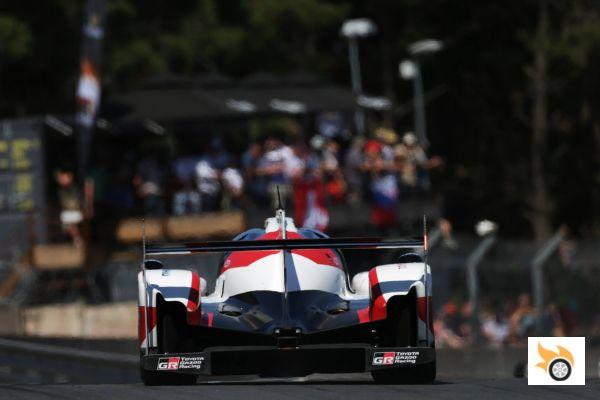
Of the four mechanical failures we saw in the race yesterday, only two had to do with hybrid systems. Some people bemoan seeing an LMP1 class with breakdowns, but forget that this is not a "driver sports show". Le Mans, and car racing in general in its origin, are team competitions.
A team of engineers who develop a car to the limit, of mechanics and engineers who tune it and make it run, and of drivers who are also in charge of pushing it to the limit.
When everything is at the technical limit, failures happen. And it doesn't matter whether the cars are hybrids or not. In fact, the big key to the relevance of LMP1 cars is that many of their technological advances can be applied almost directly to production cars in a short time.
Porsche has already confirmed that much of what it has learned in the 919 program has to do with what is applied to the 918 road car, and much of what is still being learned is being transferred to its Mission E project, in terms of high voltage management, current inverters and, above all, battery chemistry.
Toyota is doing something similar with its hybrid program.
There is no more relevant competition when it comes to pushing the limits of engineering than Le Mans on the world automotive scene, and we cannot ignore a reality: Cars are made by engineers, and without competitions like these, these engineers would not learn so quickly to manage and challenge hybrid technology.
Thinking about Formula 1? Ok, you're right, it also helps push batteries and hybrid systems, but because of its technical regulation management, it doesn't help a smooth transfer of knowledge to road cars.
If what the mass fan base wants to see is competitive racing where the variable factor is the driver, Indy and Nascar are there for that.
An AK-47 in the hands of Gentleman Drivers
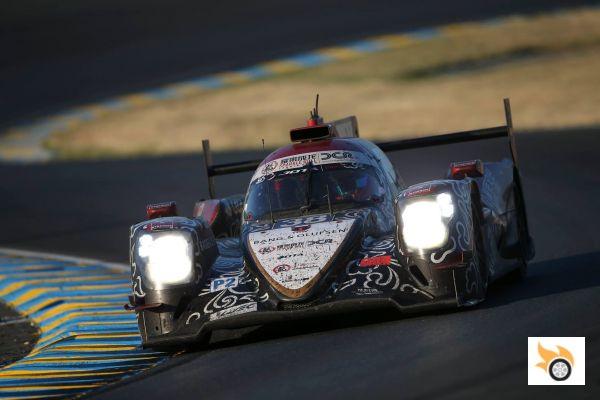
Having finished my reflections on the LMP1s, it's my turn to talk about the LMP2s. The invention of the new cars in the second category has resulted in some great racing machines and... cheap on top of that. Someone from Oreca told me not long ago that they were not sure if they would be able to make the LMP2 business profitable with the price they are forced to sell them for. "The business is in spare parts", he told me, "and by putting Amateur drivers at the controls of such fast cars we will surely sell a few of them".
The truth is that the speed of the LMP2 cars was surprising. Yes, they were close to the LMP1s, but it's also true that the LMP1s could be faster if they could accelerate hard all the way down the straight, and not let themselves go in the last meters.
The problem is whether or not the privateer drivers can manage these cars, which do have driving aids, of course. The spectacle of Le Mans has calmed us all down a bit. And although an ex-driver whose name I won't remember said that giving an LMP2 to an amateur is like giving a kalashnikov to a drunk, the reality has been less dangerous, at least for the moment.
The Balance of Performance, or how to match the level of the worst car
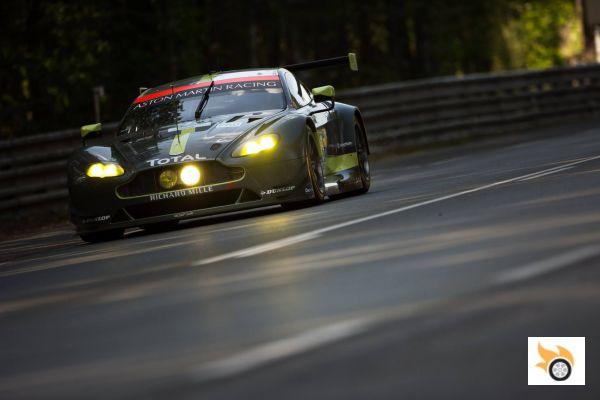
What do you expect from the GT category? Depending on what you answer, the summary of yesterday's race will be one or the other. The show was great, with a close fight between Aston Martin and Corvette, with Porsche as a special guest, and Ford and Ferrari with some unexpected speed issues.
Yes, the show was spectacular, but behind it all lies a rather "ugly" secret in my opinion. Is it relevant to see an old fashioned Aston Martin being faster than a Ford GT or any of its other rivals?
We have to remember that this category, the GT category, was originally about trying to prove which was the fastest and most reliable Grand Tourer on the market, and now it's no longer a true representation of "any" of that. The category has become a place where the official teams spend abnormally high figures (the Balance of Performance may have been intended to reduce costs, but a Ford GT race car is worth millions of euros), only for David Richards to win on track with a car that, if the BoP were removed, would be much slower than his rivals.
The positives? We see fights from many manufacturers and many drivers from the first to the last lap. Spectacular and beautiful to watch. The negative? The manufacturers are getting "pissed off", and although the show is good, nobody wants to spend millions to not be competitive afterwards.
The issue is already getting a lot of attention. Last year the ACO decided to clearly benefit the Ford GT, and the result showed it. This year they have moved to an algorithm system to set the guidelines so that all the cars run the same, practically, but this is not fair either.
Official team races (I'm not talking about amateurs with customer races), are a place to show technological muscle, and the BoP has killed that. In my opinion, and given that the expense is going to be practically identical, and we will continue to see prototypes in GT form (the 911 looks like the street car in aesthetics, nothing more), the best thing would be to eliminate the BoP from the pro category open to constructors, and keep it in the AM category, so that we can see the driver fights there.
But that's not going to happen, and although "officially" everything is done for the benefit of the show, in the end everything becomes a mechanism of lobbies and interests and pressure on the ACO by the manufacturers. If the ACO wants Ford to come, the BoP adjusts to make them shine. If it's in Aston's interest this year to invest to keep their program with their new car, then they get the benefit. Next year it will be up to treating the newcomer (BMW M8) well and trying to convince Corvette that they can bring the 'Vette C7 when they release it.




